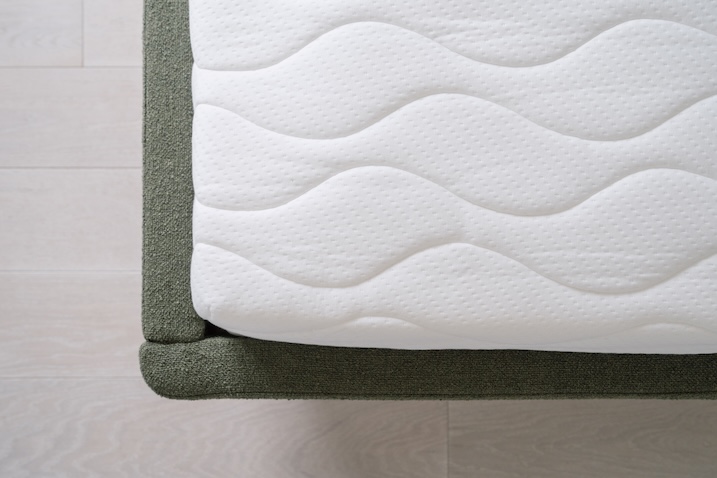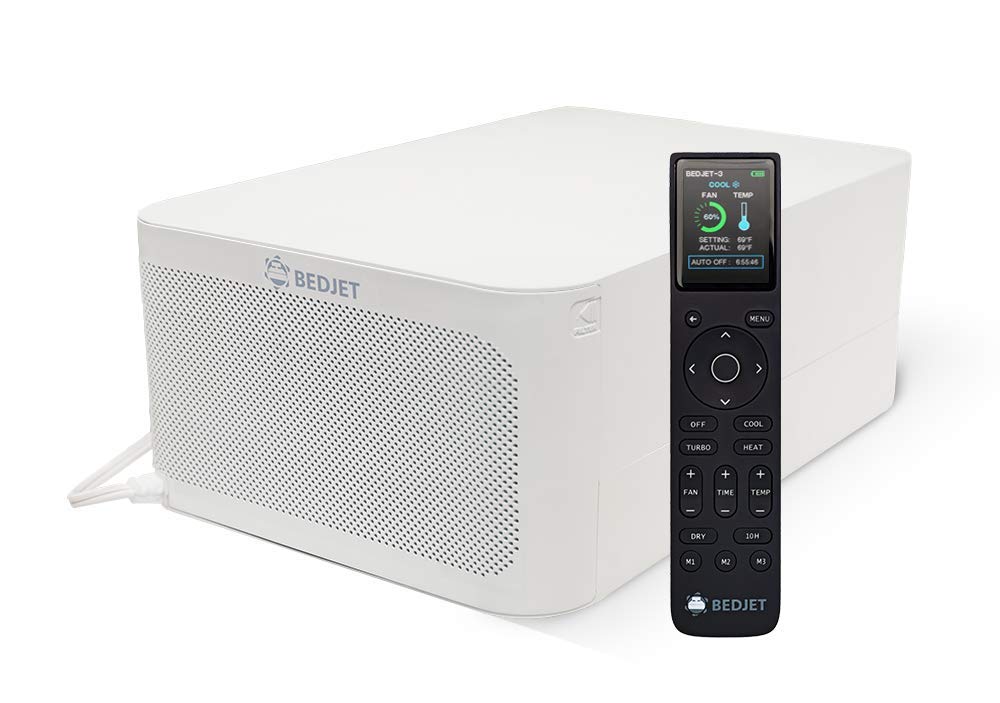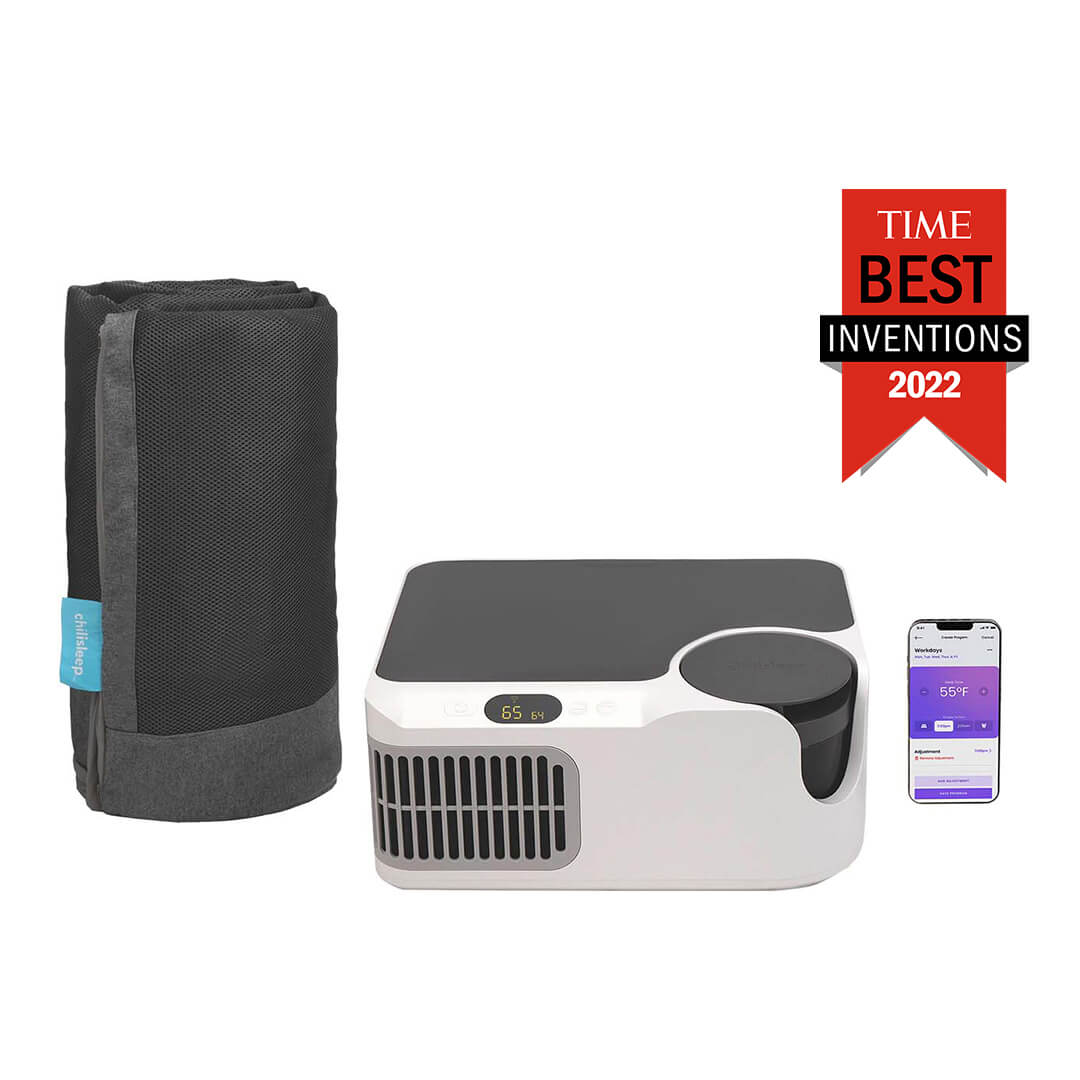Cooling Sleep Surfaces

Heat and high temperatures can negatively impact your sleep.
If you live in a hot environment or tend to feel hot when you sleep, a potential solution is a cooling sleep surface.
See how your sleep quality stacks up.
Start here to get a baseline on how well you sleep and where you can improve.
Warm Temperatures and Sleep
Warmer temperatures disrupt your body’s thermoregulation, which in turn impacts your sleep stages – including Rapid Eye Movement and slow wave sleep.
Benefits of Cooling Sleep Surfaces
Cooling sleep surfaces are an emerging option for managing heat at night. These are mattresses or mattress pads that are liquid cooled. They maintain a steady, cooled temperature – which in turn cools your body, balancing its thermoregulation and helping you sleep.

Preparing for a Conversation with a Sleep Doctor
Meeting with a sleep doctor can be an ideal way to understand and address problems you’re experiencing with sleep. It’s important to go to that appointment prepared. Learn what to know and do to get the most out of this valuable consultation.
Learn MoreHow to Choose a Cooling Sleep Surface
- Budget Considerations: Water-based systems tend to be pricier, while air-based systems are generally more affordable.
- Comfort Preference: Water-based systems offer silent operation and even cooling, while air-based systems might feel drafty for some.
- Cooling Speed: Air-based systems provide immediate cooling, while water-based systems take time to adjust the temperature.
- Maintenance: Water-based systems require periodic refilling and cleaning, while air-based systems are generally low maintenance.
Different Types of Cooling Sleep Surfaces
- Water-Based Systems: Circulate chilled water through a mattress topper for precise, personalized temperature control.
- Air-Based Systems: Use fans to blow cool air, offering quick cooling and dual-zone options for couples.
Who Might Benefit from Cooling Sleep Surfaces
- Hot Sleepers and Night Sweat Sufferers: Those who experience overheating or excessive sweating during the night.
- Couples with Temperature Disagreements: Set independent cooling zones on each side of the bed.
- Health-Conscious Individuals: Those looking to invest in sleep quality.
Who Would Not Benefit from a Cooling Sleep Surface
- Individuals with sensitivity to cold.
- Those with certain medical conditions such as Raynaud's phenomenon or certain neuropathies, should be cautious.
- People with incontinence issues.
- Those with allergies to materials used in the covers.
- Individuals with limited mobility or health conditions requiring special bedding.

Relevant Research - Cooling Sleep Surfaces
The literature supports the notion that temperature regulation, specifically cooling, is essential for sleep quality. Liquid cooled mattress covers, designed to regulate sleep surface temperature, demonstrate potential in enhancing sleep quality. These covers work by circulating cool liquid, helping to maintain a comfortable sleeping temperature, beneficial during warm weather or for individuals who sleep hot. Cooler temperatures aid in falling asleep faster and facilitate deeper, more restorative sleep. They also help in reducing overheating and night sweats, contributing to fewer sleep disruptions and enhanced overall sleep comfort.Several studies validate the importance of temperature regulation in sleep. A 2019 study found sleep quality declined as temperatures increased, emphasizing the significance of maintaining a comfortable temperature for good sleep (International journal of environmental research and public health). An optimal bed climate temperature of 89.6-93.2 degrees Fahrenheit has been described in the literature (Journal of Physiological Anthropology). Additionally, research indicates that warmer temperatures more adversely affect sleep than cooler temperatures, further reinforcing the benefits of cooling technologies in improving sleep quality (Journal of Physiological Anthropology). A pilot study exploring the impact of a cooling mattress pad system on vasomotor symptoms like hot flashes and night sweats among perimenopausal and postmenopausal women found significant reductions in these symptoms, sleep disturbance, and hot flash interference with daily activities, suggesting that cooling systems can provide a non-pharmacological option to alleviate vasomotor symptoms and improve sleep for women experiencing menopausal hot flashes (Menopause).





